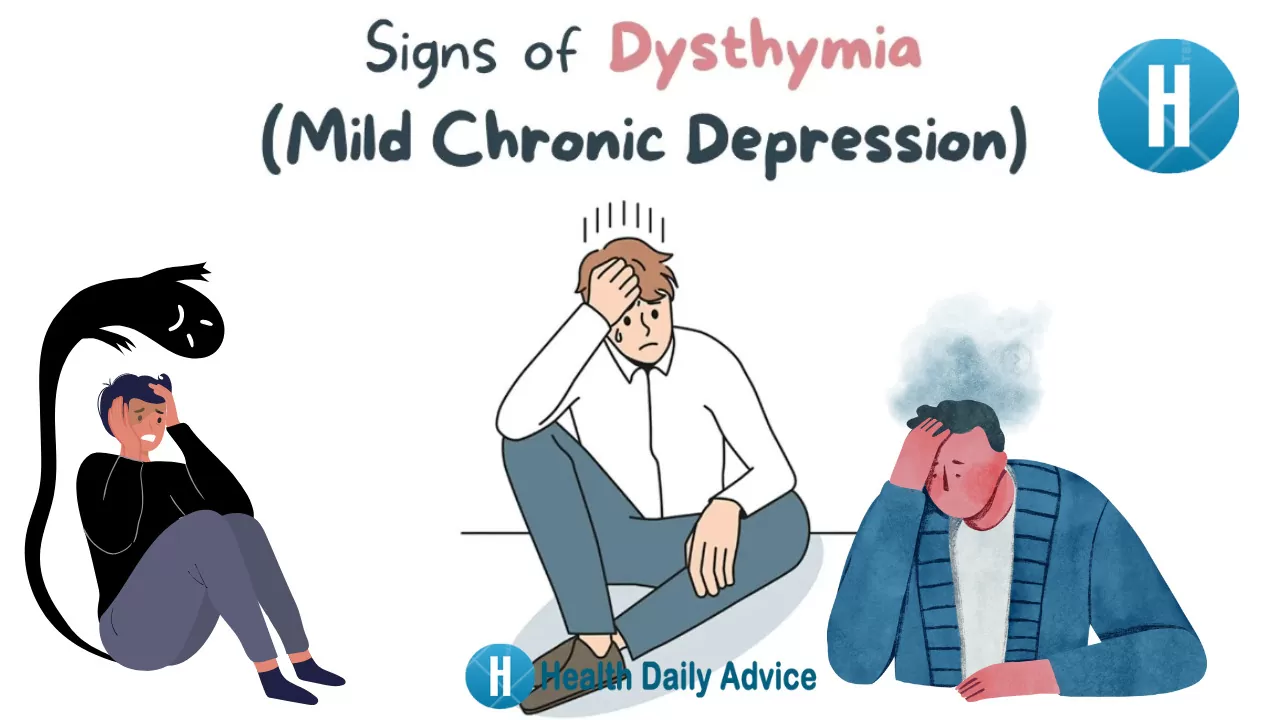Introduction
Navigating the intricate landscape of mental health, this post sheds light on the enigmatic 7 Signs and Symptoms of Dysthymia, also recognized as Persistent Depressive Disorder (PDD). Understanding the distinctions between dysthymia and Major Depressive Disorder (MDD) is crucial for those traversing the realms of persistent emotional struggles.
Dysthymia diverges from MDD in its duration, spanning at least 2 years or longer. The day-to-day manifestations are generally less intense than MDD, accompanied by subdued physical symptoms such as lethargy and appetite changes. However, the subtlety of symptoms doesn’t diminish the severity of Dysthymia. Countless individuals grapple with this condition, often unaware of their silent struggle, prompting the question, “What’s wrong with me?”

7 Signs and Symptoms of Dysthymia
Dysthymia, or Persistent Depressive Disorder (PDD), is a form of chronic depression where the symptoms are milder than Major Depressive Disorder (MDD), but they last much longer: at least 2 years.
Here are some signs of it
1. Moody:
- People around you notice frequent mood swings or express concern about your well-being.
- Constant inquiries about your emotional state become a regular occurrence.
2. Joyless Existence:
- Routine tasks and responsibilities can still be accomplished, but there’s a pervasive lack of joy.
- Actions seem devoid of purpose, performed merely for the sake of completion.
3. Vivid Dreaming:
- Unusually intense dreaming, particularly during Rapid Eye Movement (REM) sleep.
- Dreamscapes may mirror a subconscious attempt to cope with underlying emotional turmoil.
4. Indecisiveness:
- Persistent indecisiveness and poor concentration, stemming from a perceived lack of purpose.
- The struggle to find meaning in activities contributes to decision-making challenges.
5. Social Withdrawal:
- Social relationships suffer as you withdraw from interactions, leaving others feeling abandoned.
- Overwhelming guilt arises from the perceived disappointment of those around you.
6. Sleep Disruptions:
- Chronically disrupted sleep patterns, oscillating between insomnia (sleeping too little) and hypersomnia (sleeping too much).
- Inconsistency in sleep exacerbates the overall sense of disarray.
7. Double Depression:
- Experiencing “Double Depression” when major depressive episodes coincide with the enduring nature of Dysthymia.
- Acknowledging and accepting depression as an integral part of life becomes a challenging reality.
Frequently Asked Questions
Dysthymia stands out for its prolonged duration, lasting at least 2 years, with milder but persistent symptoms compared to the more intense but episodic nature of Major Depressive Disorder.
Yes, many individuals may live with Dysthymia without realizing it, attributing their emotional struggles to the belief that it’s just a part of their personality or life.
Offering non-judgmental support, encouraging professional help, and actively listening can be instrumental in aiding someone with Dysthymia.
Dysthymia distinguishes itself from Major Depressive Disorder (MDD) primarily in terms of duration and intensity. While MDD is characterized by more severe but episodic symptoms, Dysthymia persists for at least 2 years with milder yet enduring manifestations.
Supporting a loved one with Dysthymia involves fostering a non-judgmental environment. Encouraging them to seek professional help, actively listening, and offering empathetic support are essential steps in aiding someone on their journey to managing Dysthymia.
Yes, there are effective treatments for Dysthymia. Psychotherapy, particularly cognitive-behavioral therapy (CBT), is commonly used to address persistent negative thought patterns. Medications, such as antidepressants, may also be prescribed based on individual needs.
Dysthymia can be equally, if not more, disabling than Major Depressive Disorder (MDD). Despite its milder symptoms, the chronic nature of Dysthymia and its impact on daily functioning can significantly affect an individual’s quality of life. Recognition and appropriate management are crucial for improving outcomes.
Conclusion:
The difference between PDD and MDD is that, apart from the longer duration, PDD often has lesser physical symptoms like fatigue and appetite changes. The social and mood aspects are usually more prominent.
Do not think of PDD as ‘in between’ MDD and mental well-being it can be even more disabling than MDD. Some people go their whole lives without even knowing they have PDD when they accept that life is just ‘like that’.
Join the Conversation
In the realm of mental health, sharing experiences and insights fosters a sense of community. If you resonate with the points discussed or have additional thoughts, feel free to share your journey in the comments below.
Stay Connected for More Insights
For a continuous stream of articles delving into the intricacies of mental health, stay tuned to our site: Health Daily Advice.
Remember, understanding and empathy are powerful tools in the journey toward mental well-being.










